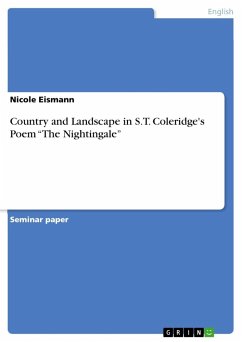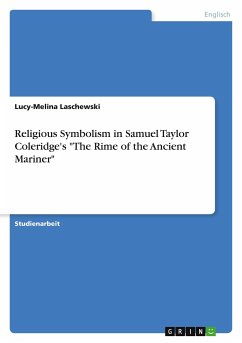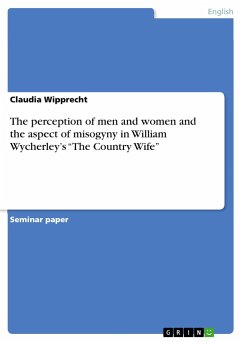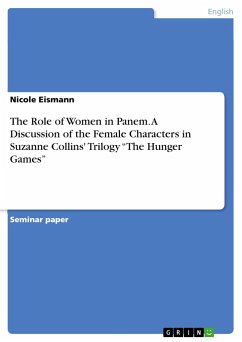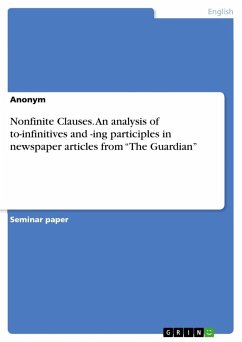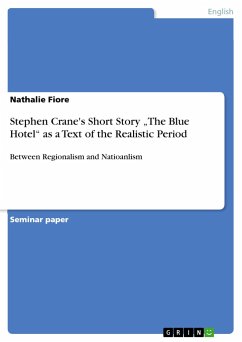Seminar paper from the year 2014 in the subject English Language and Literature Studies - Literature, grade: 2.3, University of Bonn (Institut für Anglistik, Amerikanistik und Keltologie), course: Country and City in 19th Century Literature, language: English, abstract: In this paper, Samuel Taylor Coleridge's poem "The Nightingale" will be discussed in terms of its not so common structure and its textual aspects, with a special focus on the depiction of landscape and the role of the nightingale as the poem's leitmotiv. The latter part also includes a detailed discussion of all humans that are directly or indirectly involved, and their different relationship with nature. In the end it will be demonstrated, in how far a specific language use supports the writer's intention and the image of nature and countryside which is offered throughout the poem.After its first publication in Coleridge's and Wordsworth's mutual work Lyrical Ballads in 1798, "The Nightingale: A Conversation Poem" has been a highly polarising poem among critics. While many reviewers criticise first of all the structure of the poem, George Watson called it "one of the most considerable of Coleridge's poems". It belongs to the group of conversation poems, which has not been given its name by the author but later, in the 20th century, by critics, who grouped eight of Coleridge's poems together and used the subtitle of "The Nightingale" as an overall description of the group. Conversation poems are built up like conversations between the speaker and one or more explicitly named addressees inside the poem. In most of the poems, Coleridge's wife Sara Fricker or/and their son Hartley are addressed directly. "The Nightingale" marks the only exception since the conversation in this poem happens between Coleridge and his friends, William and Dorothy Wordsworth. All conversation poems share the common topics of men's relationship with nature, explicit experiences with nature itself and God's appearance in nature. Furthermore, they are written in blank verse and share a tripartite structure - either in form of a 3-time-structure or as a semantic division, also a combination of both is possible, e.g. in "Frost at Midnight".

